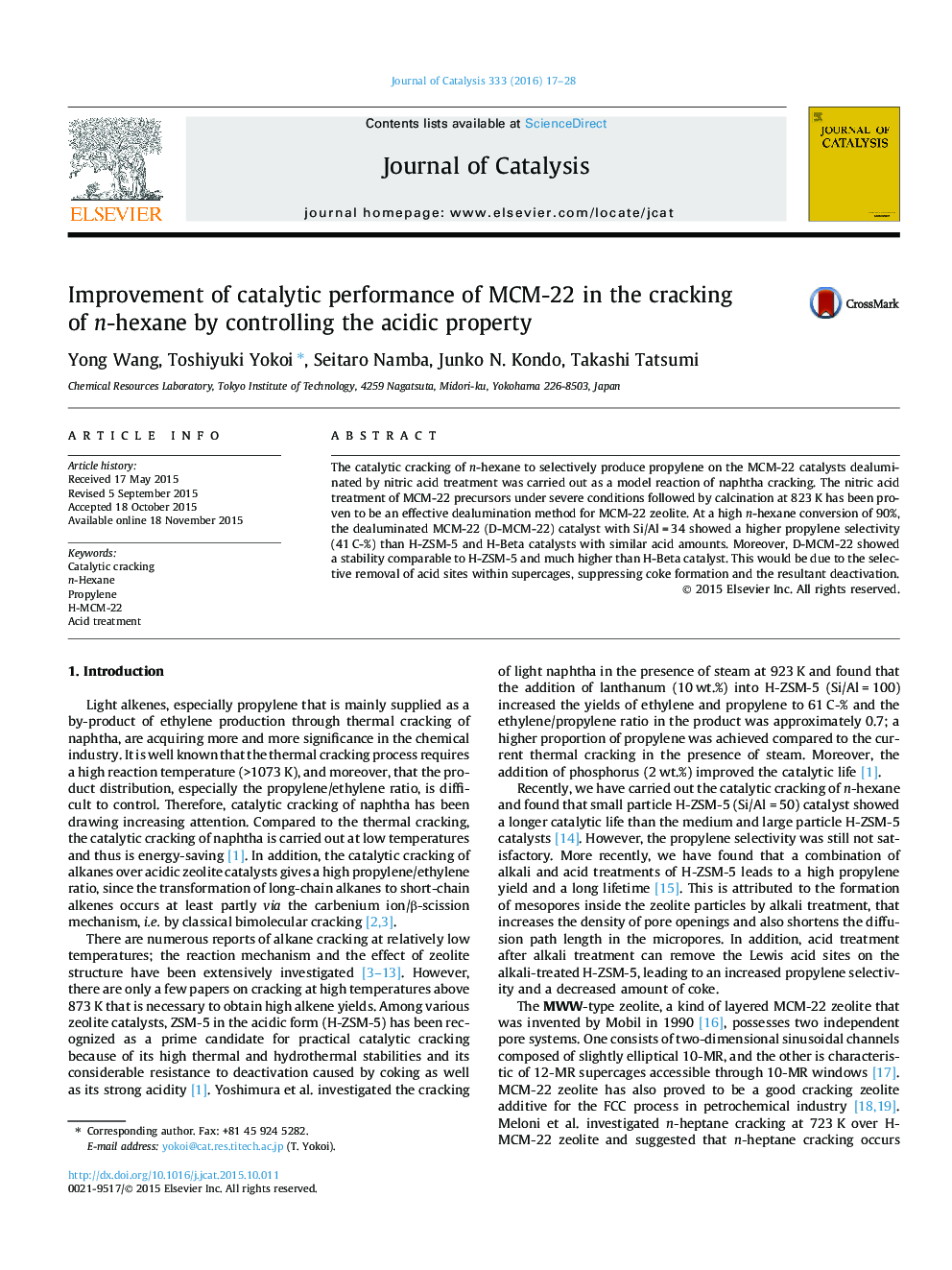| کد مقاله | کد نشریه | سال انتشار | مقاله انگلیسی | نسخه تمام متن |
|---|---|---|---|---|
| 60653 | 47541 | 2016 | 12 صفحه PDF | دانلود رایگان |

• The MCM-22 precursor was dealuminated by a combination of nitric acid treatment and calcination.
• Dealuminated MCM-22 by acid treatment of the MCM-22 precursor under severe conditions followed by calcination produces longer catalytic life and higher propylene selectivity at very high n-hexane conversions, due to the selective removal of acid sites within the supercages.
The catalytic cracking of n-hexane to selectively produce propylene on the MCM-22 catalysts dealuminated by nitric acid treatment was carried out as a model reaction of naphtha cracking. The nitric acid treatment of MCM-22 precursors under severe conditions followed by calcination at 823 K has been proven to be an effective dealumination method for MCM-22 zeolite. At a high n-hexane conversion of 90%, the dealuminated MCM-22 (D-MCM-22) catalyst with Si/Al = 34 showed a higher propylene selectivity (41 C-%) than H-ZSM-5 and H-Beta catalysts with similar acid amounts. Moreover, D-MCM-22 showed a stability comparable to H-ZSM-5 and much higher than H-Beta catalyst. This would be due to the selective removal of acid sites within supercages, suppressing coke formation and the resultant deactivation.
Figure optionsDownload high-quality image (186 K)Download as PowerPoint slide
Journal: Journal of Catalysis - Volume 333, January 2016, Pages 17–28